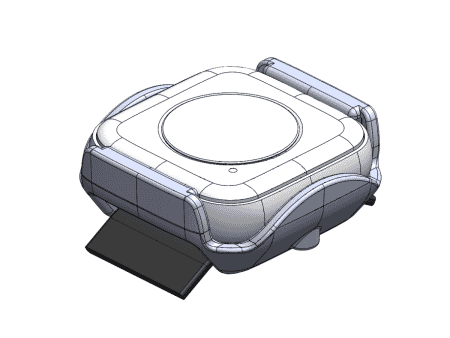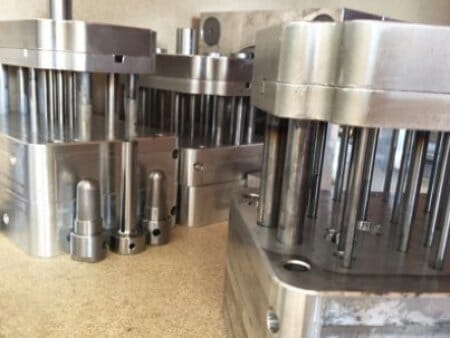How do polymers actually behave at high temperatures?
One of the questions we sometimes get asked is ‘How do polymers actually behave at high temperatures?’ or ‘What do the quoted thermal properties mean in reality?’
To answer these questions we thought we would describe what the tests are and how it is easiest to interpret them. Then we had a look at a practical example, testing the effects of temperature on the mechanical performance of a clear Stereolithography resin.
Vicat softening (Thermoplastic only)
The temperature at which a needle, with a cross sectional area of 1mm2, penetrates to a depth of 1mm. 10N, or 50N load used, dependant of test.
To all intents and purposes this is a hardness test at temperature. In a standard indention hardness test, the temperature is kept constant and the amount of indentation into the part varies depending on the material, and from this a hardness value is found. For the vicat test, the temperature is varied until a predetermined indentation depth is achieved. A good rule of thumb is the higher the materials hardness value, the higher its’ vicat softening value will be, although this is not always the case.
HDT (Thermoplastic and Thermosetting plastic)
A 3 point bending test, where the load is applied at a set value (0.43MPa, or 1.82MPa), and the temp is increased until a deflection of 0.05mm is recorded. Essentially the flexural stiffness, or bendiness, of the material is measured as the temperature is increased. Similarly to the vicat softening temperature, the higher the stiffness of a material at room temperature, the higher it’s HDT value. Also similarly to the vicat softening temperature, this is not always the case, and exceptions to this rule will occur.
Melt temperature (Thermoplastic only)
Melt temperature is fairly self evident, the temperature at which a thermoplastic changes from a solid to a liquid state. In all case, thermosetting plastics will decompose before reaching their melting temperature.
Tg (Thermoplastic and Thermosetting plastic)
Differential scanning calorimetry is used to find this value, which is actually quite simple. A computer steadily increases the temperature of two vessels. In one vessel is the sample you are testing, the other is empty, and acts as a reference. By measuring the difference in heat required to heat the vessel with the test sample in, vs the reference vessel, the flow of heat into the material can be found. When a material reaches its Tg, the amount of heat required by the material to keep it’s vessel at the same temperature as the reference vessel will likely increase (as most phase changes are endothermic). This transition happens over a range of temperatures, but convention has led to it being quoted as a single value, that is located in the middle of that range.

The Tg indicates when a material has changed state (e.g. solid to rubbery). Some thermosets have many such changes in state, and therefore multiple transition values.
Testing SLA ClearVue
But what does this actually mean to a designer or engineer? To get a ‘real-life’ understanding of what happens to a typical SLA resin, when exposed to elevated temperatures, SLA ClearVue was tested.
ClearVue’s datasheet gives a HDT of 50 °C @ 264 PSI. This means that the test part deflected a predefined amount (governed by a standard), under a load of 264 pounds per square inch, at 50 °C. And whilst this information can be useful when comparing ClearVue to another material, it doesn’t tell you how ClearVue behaves at this temperature; only that it deflected.
A simple test was set up, with a ClearVue strip of 100x25x4mm being restrained at one end, whilst the other was loaded with a bolt. This assembly was placed within a water bath, which was then heated using an immersed heating element; also used to stir the water. Temperature was monitored using a digital thermometer, placed next to the test part, and a camera was used to record the part’s deflection.
- Upon reaching ~42.5°C, a loss of stiffness is observed.
- Upon reaching 45 °C, a further loss in stiffness is observed, with deflection over time increased dramatically.
- Upon reaching 50°C, the material is very pliable.
This simple test can be used as an indicator of ClearVue’s performance, if it is the material you desire. However, all applications remain individual, and differing loads and geometries can affect the final part in different ways. Additionally, numerous SLA materials exist that have drastically different mechanical performance under thermal loads…and we haven’t even mentioned the standard plastic’s available for conventional manufacture!
If you have an application that involves a thermal load and are unsure how your desired material will respond, get in touch with us. We can help you find a solution with minimal fuss.



























